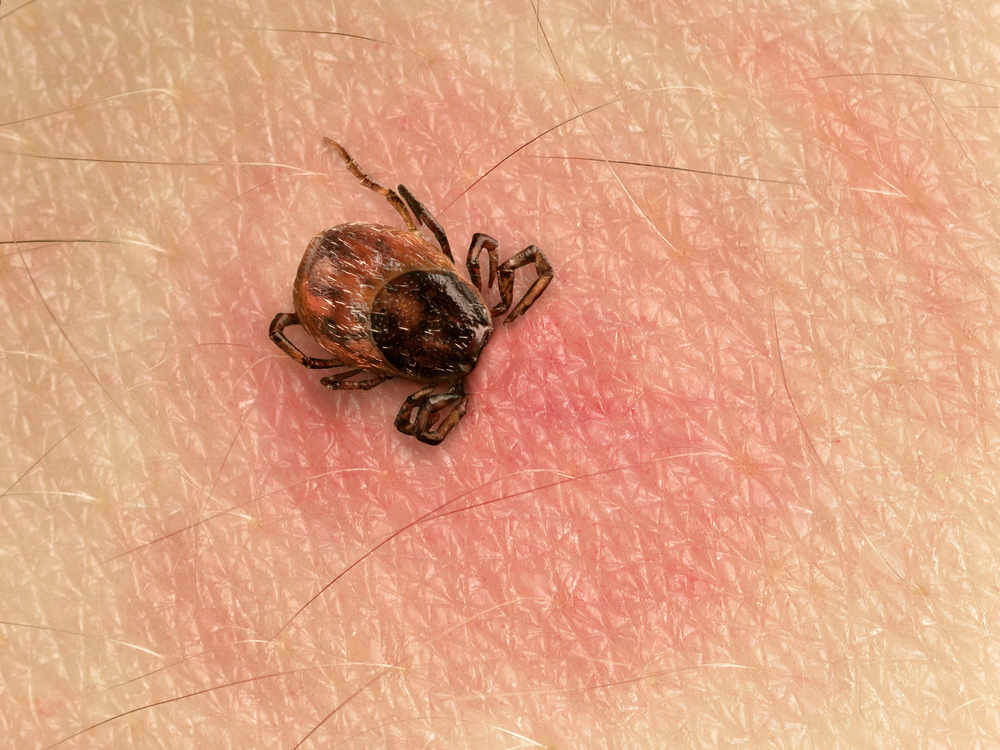Earlier this year a patient was treated at the Hospital for Lyme disease – a bacterial infection which can be spread to humans if an infected tick attaches to their skin.
If left untreated the disease can leave the person with serious long-term health problems including heart failure and paralysis.
Dr Ivan Muscat, the consultant microbiologist at the Hospital, said that Jersey sees ‘small numbers’ of imported cases of Lyme disease, which is carried by some ticks in Europe, the USA and parts of the UK, and that these averaged about two per year.
However, earlier this year, for the first time, an Islander was treated for a case of the disease which may have been acquired in Jersey.
It is unclear whether the incident was a one-off occurrence or if Lyme-bearing ticks have become established in the Island.
GPs and hospital consultants were made aware of the incident and were advised on what they should look out for but no further cases have been reported since.
The most common signs are a rash and flu-like symptoms.
If the disease is left untreated, symptoms may include loss of the ability to move one or both sides of the face, joint pains, severe headaches with neck stiffness, or heart problems.
The news comes after it was reported in the national media that NHS laboratory reports had disclosed that the number of confirmed cases of Lyme disease in the UK had quadrupled in 12 years.
Dr Muscat said that the Health Department and the Environment Department will be investigating with UK-based scientists during the spring of next year in order to determine whether the most recent case was a one-off or whether there is initial evidence that Lyme-bearing ticks have become established.
Scientists will spend time in woodland and rural areas looking at ticks to determine their type and to test for disease.
‘We have no proof that there is ongoing Lyme disease in Jersey,’ the microbiologist said.
‘What we have is the first possible case of indigenous Lyme, which could be a complete one-off, but that is what we need to find out.’
Kate Williams, veterinary surgeon at Jersey Village Vets, said that she believed the main problem was dogs that had travelled abroad and had returned to the Island with ticks on them – which could potential be Lyme-bearing.
‘Dog-owners should keep an eye out and check for ticks after walks and destroy them before they come back to the Island,’ she said.

What is Lyme disease?
Lyme disease is a bacterial infection spread to humans by infected ticks.
Most people who get tick bites do not get Lyme disease and not all ticks are infected, but the risk of contracting the disease increases the longer the tick is attached to the body.
Where can you catch it?
Ticks are generally found in woodland and heath areas and feed on the blood of birds and mammals, including humans.
You cannot catch Lyme disease by being around an infected person.
And although pets can become infected by a tick, they cannot transmit the disease to humans unless an infected tick falls off the animal and then bites a person.
How is it detected?
Blood tests can be carried out to confirm the diagnosis after a few weeks, but these can be negative in the early stages of the infection.
Can Lyme disease be treated?
Lyme disease can be treated with antibiotics if it is detected early on.
But if it is not treated or treatment is delayed, there is a risk that the patient can develop long-lasting symptoms.






